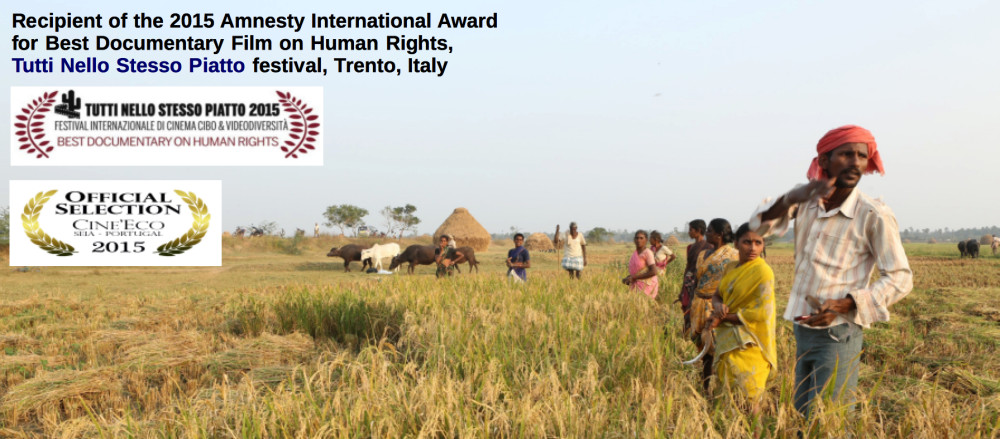The people of a rural community in India confront a modern
reality – economic development may painfully complicate
their age-old, self-sufficient, subsistence-farming way of
life.
The struggle provokes a question that shoppers in the West
rarely ask of themselves: What happens when we buy yet
another pair of running shoes, glam underwear, or other
baubles of our consumer societies?
The debates regarding the future of rural India pose an
overarching question: What is the best way forward, when one
approach causes such distress, but attempting no new
approach seems to threaten India’s economic
boom?
How much will economic development cost?
That is the troubling, fundamental question that rural
Indians, along with government and corporate officials, ask in
Walls and the Tiger.
State and federal governments focus on such measures of wealth
as “average income” to support their agenda of growth led by
hugely increased exports of manufactured consumer goods.
That hardly reassures villager-farmers who have lost their
land, their age-old subsistence livelihoods, their place in
society, and in many cases members of their family.
Indisputable is that changing the face of rural India – and
possibly ushering out a way of life of millennia.
Walls and The Tiger goes to rural communities
to see what these changes look like, in day-to-day life.
There, local youth who have won the relatively few factory
jobs sing the praises of the new economy for boosting their
purchasing power and entertainment options.
But most farmer-villagers have begun to learn what will follow
from the claim of Indian government and industry leaders that
India can outstrip even China’s
manufacturing-based economic-development boom.
The reformers’ recipe:
- create and harness a huge pool of low-cost manpower;
-
put it to work in multinational corporations’ new
factories in rural India;
-
entice those companies to India with lavish offers: tax
forgiveness, grants of seized farmland, power to enforce
their own conditions on their labor forces…
All that in return for boosting exports of consumer goods to
an insatiable West.
In a rural community in southeast India,
Walls and the Tiger finds women like Gamli, whose
husband has died, a broken man, after government seizure of
farming land stuns the region.
Muniswami and his family have lost their land, their
livelihood, and almost their will to live. Only community
bonds save them from adding to the 200,000 Indian
farmer-villagers who have died from suicide in a decade.
How, ask they and their neighbors, is it “progress” when the
state seizes fertile agricultural land from farmer-villagers
– still the majority of Indians – and hands it to mammoth
manufacturing corporations, virtually without charge?
How does it help Kistamma, whose family has lost everything –
self-sufficiency, social standing, access to credit, even
their hopes of a joyful marriage for their daughter?
How does it help that protests against the changes, and the
corruption that is rife in their implementation, are met with
brutality? Another villager relives the loss of her husband,
shot at close range during a police riot.
As community leaders rally their fellow villagers to resist
the government agenda, they question the validity of the
government’s citing standard measures of growth, such as
“income levels.” Those, say the resistance leaders, are
meaningless to an ancient subsistence way of life that to this
day operates with minimal involvement in any cash economy.
And Walls and The Tiger asks whether, in view of these
realities of the struggle to define and implement worthwhile
economic and social change, consumers in the West should pause
before buying yet another pair of running shoes, glam
underwear, or other baubles of their consumer societies?
But even as conditions become more and more perilous, those
few responsible and courageous individual continue to
encourage their fellow villagers to hold firm.
